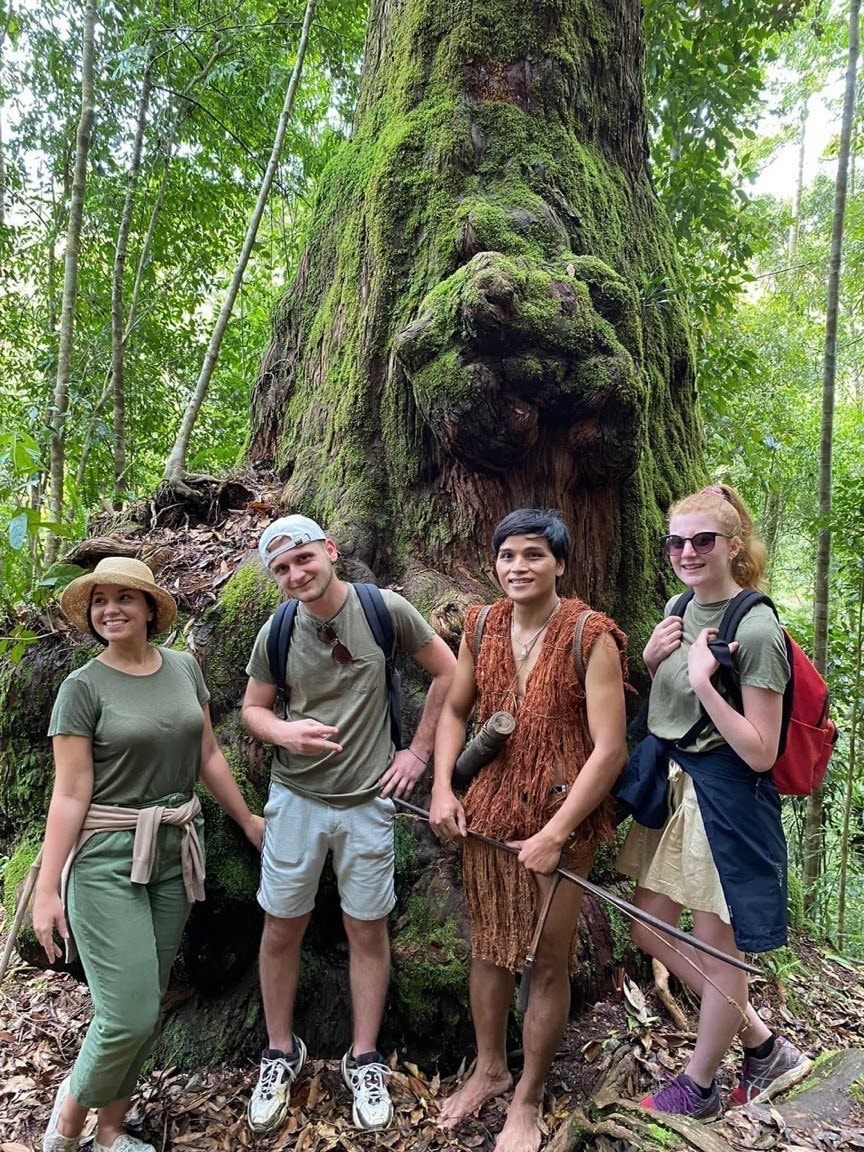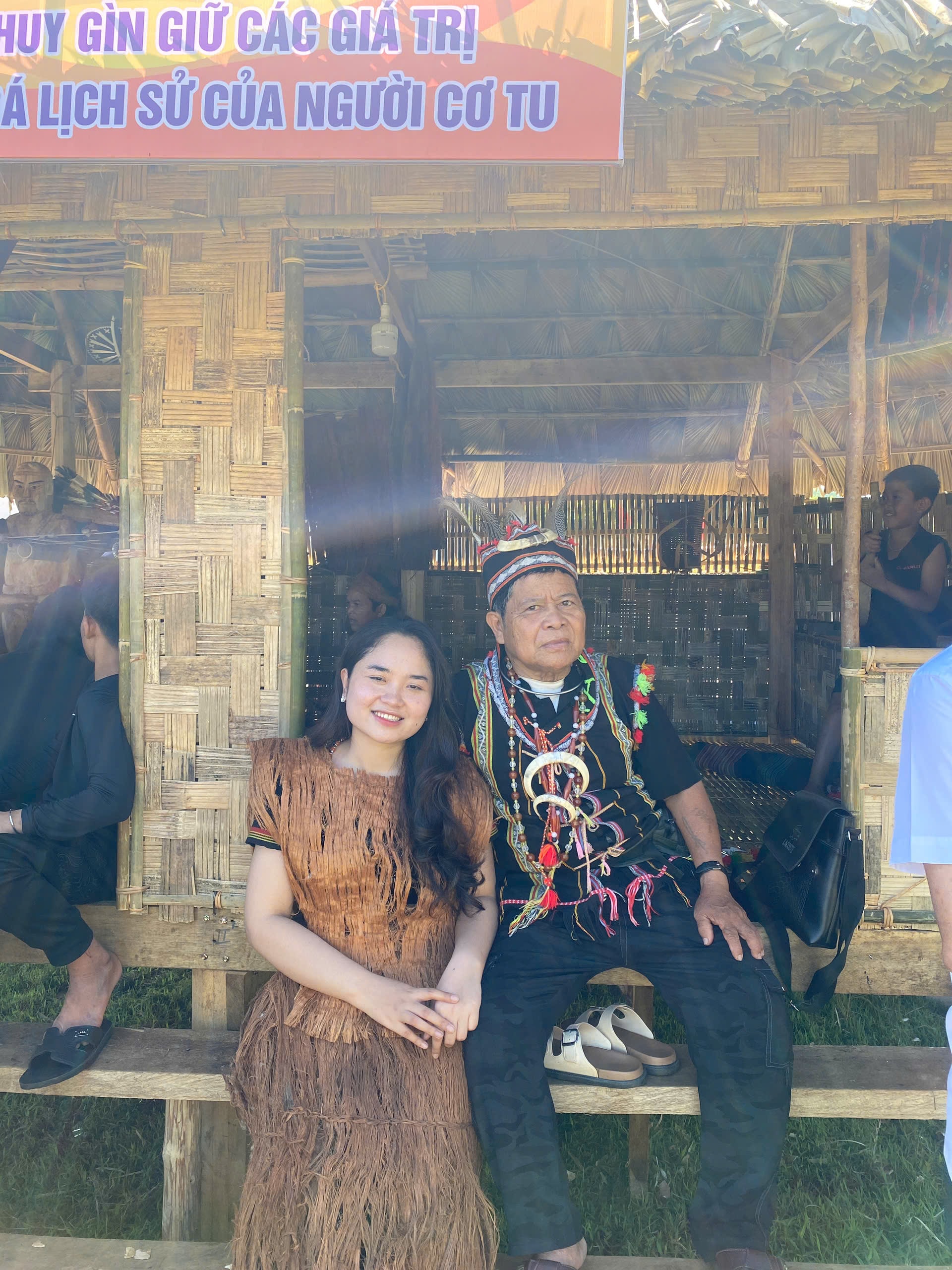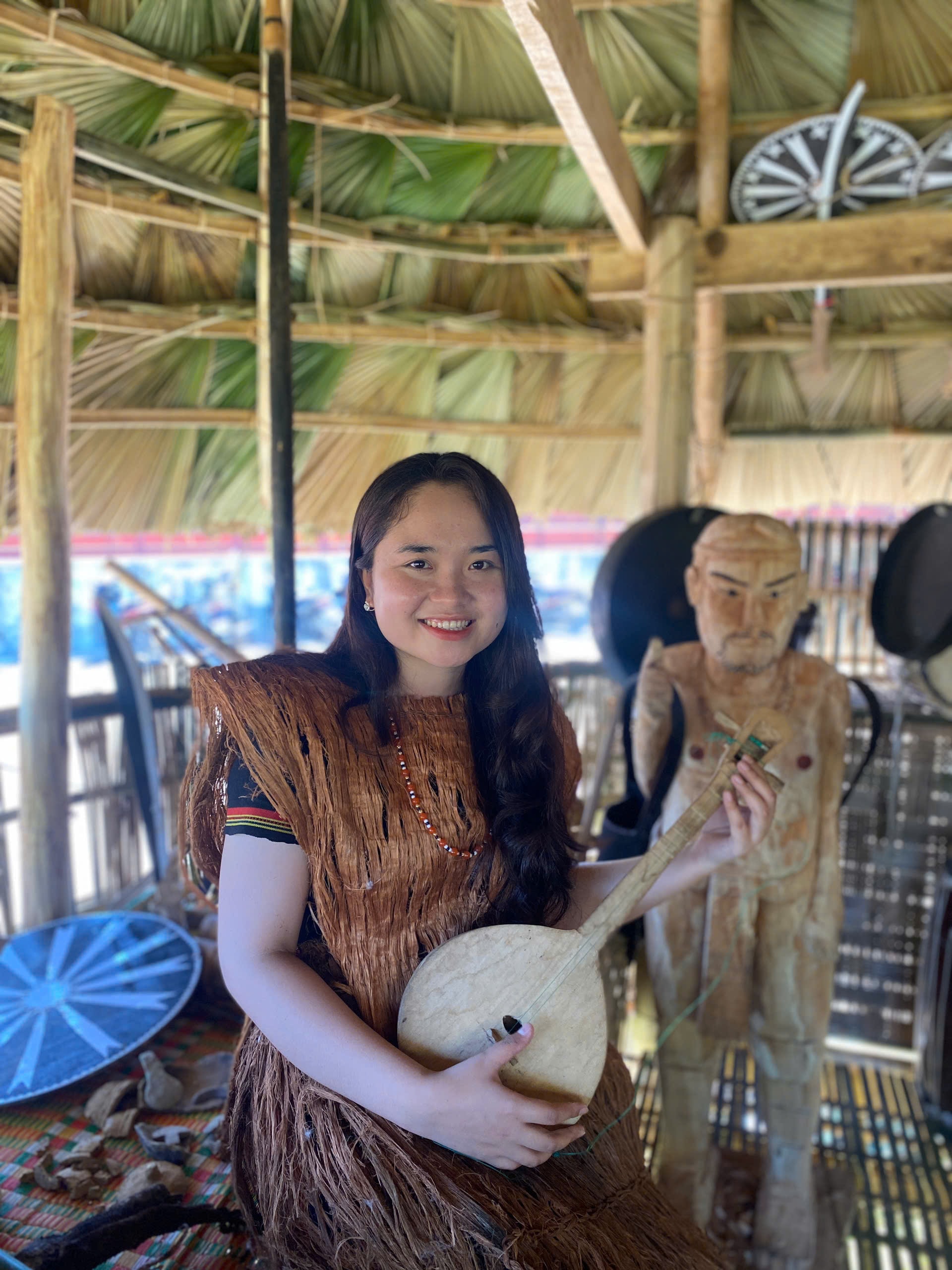
In the past, when cotton trees did not exist and weaving techniques were not known, the Co Tu people had to go deep into the forest to find bark from trees such as ta-duih, a-mot, ta-rong... (trees with a lot of latex and thick bark) to make clothes and jewelry for themselves, their families and to give to relatives.
In addition to being good at hunting, building houses, carving wood, farming, etc., Co Tu men must also be good at making musical instruments, performing musical instruments, and speaking and singing folk songs. In particular, they must be good at making costumes and jewelry from forest trees to give to their loved ones.
Usually, the Co Tu people choose the bark of the a-muot, ta-duih, ta-rong, and pơ-pleem trees..., which are woody plants that grow abundantly in the Truong Son mountains and forests, to make loincloths and skirts; and for shirts and hats, they choose the zilang tree, which has a vine trunk, about 5cm in diameter, and grows in clumps. This type of tree has a fragrant smell and is a medicinal herb that can be thinly sliced to make tea, which is good for health.
To find a suitable tree species that can be used to make clothes is not easy, one must cross high mountains, cross streams, and climb passes for one or two days; but to make shirts, skirts, loincloths, and blankets from forest trees is even more difficult. After the bark of the popleem and ammuot trees and the trunk of the zilang tree are formed into large, long sheets, they must be brought to a stream or river to soak for three or four days to release all the resin, then dried for one or two days.
Once dried, the bark pieces are cut into shirts, loincloths, skirts and hats according to the wearer's size. To join the bark pieces together, the Co Tu people use hemp or bhơ-nương (a very flexible and strong tree) as sewing thread. If they have a large bark piece, they just need to make a hole to make a collar, then add strings to the edge of the shirt so that when worn, they can tie them together instead of buttons.
Although he has gone through more than 80 farming seasons, old man Bhling Hanh (in Cong Don village, Nam Giang commune) is still sharp-minded and his hands are still skillful. He not only makes and performs Co Tu musical instruments well, but also goes to the forest to look for plants that can be used to make costumes.
When asked about the value of bark clothing, the old man smiled gently and said: “In the past, bark clothing made by our ancestors could be exchanged for a pig of 3 to 5 hand spans. Now, I do it mainly to preserve the identity and tradition of my ancestors and to teach the younger generation not to lose the good cultural identity of the nation.”
Costumes in general, including ancient costumes made from forest trees and traditional brocade, for the Co Tu people are not simply to cover and protect the body, but also contain many cultural values, reflecting the formation and development process of the entire ethnic group. Ancient costumes made from tree bark of the Co Tu people remaining in the mountains also reflect the spirit of solidarity and love between people, between people and mountains, forests, nature, trees, and clear green streams...


Source: https://baodanang.vn/doc-dao-trang-phuc-tu-vo-cay-rung-3264990.html


![[Photo] General Secretary To Lam attends the ceremony to celebrate the 80th anniversary of the post and telecommunications sector and the 66th anniversary of the science and technology sector.](https://vphoto.vietnam.vn/thumb/1200x675/vietnam/resource/IMAGE/2025/9/29/8e86b39b8fe44121a2b14a031f4cef46)
![[Photo] General Secretary To Lam receives US Ambassador to Vietnam Marc Knapper](https://vphoto.vietnam.vn/thumb/1200x675/vietnam/resource/IMAGE/2025/9/29/c8fd0761aa184da7814aee57d87c49b3)
![[Photo] Many streets in Hanoi were flooded due to the effects of storm Bualoi](https://vphoto.vietnam.vn/thumb/1200x675/vietnam/resource/IMAGE/2025/9/29/18b658aa0fa2495c927ade4bbe0096df)

![[Photo] General Secretary To Lam chairs the meeting of the Central Steering Committee on preventing and combating corruption, waste and negativity](https://vphoto.vietnam.vn/thumb/1200x675/vietnam/resource/IMAGE/2025/9/29/fb2a8712315d4213a16322588c57b975)
![[Photo] National Assembly Chairman Tran Thanh Man chairs the 8th Conference of full-time National Assembly deputies](https://vphoto.vietnam.vn/thumb/1200x675/vietnam/resource/IMAGE/2025/9/29/2c21459bc38d44ffaacd679ab9a0477c)































































































Comment (0)